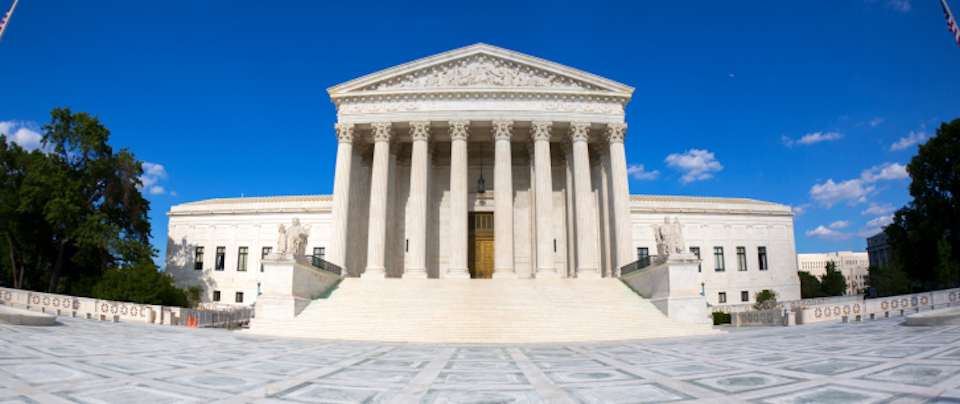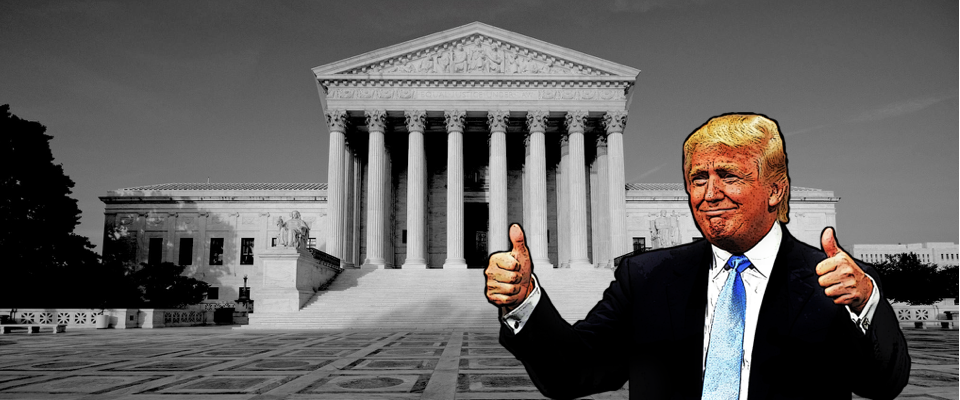A popular opinion on the Internet lately is that the members of the Supreme Court are a bit superannuated. You know: supremely old, dated, over the Capitol Hill, if you will. The presumption seems to be that with our geriatric justices aged to imperfection, they’re not only physically impaired, but technologically impaired as well. And news outlets have made a point to notice—with Salon calling the Court’s tech illiteracy “baffling,” and Reuters referring to the justices as “black-robed-techno-fogeys.”
This perspective isn’t completely unfounded, what with the recently deceased Justice Antonin Scalia not knowing that HBO is a paid premium cable channel and Chief Justice John Roberts not understanding that many people carry more than one cell phone.
So in some sense, the Supreme Court just dodged a bullet in the Apple vs. FBI case, when the federal government abandoned its attempt to force Apple to create a backdoor to unlock a San Bernardino shooter’s iPhone. (Apple had refused, arguing it would jeopardize the privacy of millions, and Apple vs. FBI seemed certain to ultimately land before the court—until the feds found a hacker to crack the phone for them.)
It’s yet to be determined whether the justices’ tech foibles are caused by old age, or because, as Justice Sonia Sotomayor acknowledged today, the job has gotten “exponentially more complicated” than in previous decades and 12-hour workdays don’t allow much time for the justices to update their Candy Crush apps. But as more complex and high-stakes technology cases like Apple vs. FBI emerge, should we be worried that our Supreme Court isn’t better educated in the intricacies of tech?
Well, there’s certainly room for improvement.
“Because technology is changing so rapidly and technology is showing up in so many cases across the legal spectrum, I think most judges would admit they know they need to learn more and they want to learn more,” says Jim Dempsey, executive director of the Berkeley Center for Law and Technology. “And keeping pace with technology is now critical in a wide range of legal fields.”
That’s why Berkeley Law is looking to create more technology resources specifically aimed at judges. The law school, he says, is in the process of hiring a legal fellow who would specifically focus on technological issues—developing tutorials and webinars and other educational materials that would be available to both federal and state judges.
The law school’s Berkeley Center for Law and Technology is known for keeping a finger on the technological pulse and providing resources to those practicing law. Last month, the Berkeley Center held a forum in Silicon Valley educating lawyers on everything from changing policies in privacy law and tech to the inner workings of specific technologies—for example, how ad software works, and how social media sites are structured to safeguard your privacy, or not.
“In every case, the justices have to learn about something that they may need a crash course or a refresher course in….They just have to be quick studies.”
Despite any dark clouds looming over the ever-changing and complex landscape of technology, Berkeley experts say we shouldn’t worry too much about our Court’s ability to traverse the subject.
“In every case, the justices have to learn about something that they may need a crash course or a refresher course in—whether it’s an esoteric body of law, or some technology, or the details of how a small business works,” says Molly Van Houweling, director of the Berkeley Center. “They just have to be quick studies.”
“The real question is not about educating judges and justices,” Van Houweling says, “so much as whether some questions would be better dealt with in different fora.”
In other words, it’s not the Supreme Court’s job to make judgments on technological intricacies. Its role here is loftier: To determine whether laws and government policies involving technology square with the U.S. Constitution.
Take, for example, the 2010 case City of Ontario California vs. Quon. Police officers were texting sexually explicit messages on “alphanumeric pagers” that were meant to be used only for work, and when supervisors read the texts, the Supreme Court had to confront whether this was a Fourth Amendment violation. They ruled that because the texts were sent on a work pager, the employer was justified in perusing them, and it didn’t violate the Fourth Amendment.
“The Court] more or less admitted that it wasn’t prepared to talk about the technology, and ended up deciding the case on grounds that didn’t turn at all on the nature of the technology.”
“[The Court] more or less admitted that it wasn’t prepared to talk about the technology,” Demspey says, “and ended up deciding the case on grounds that didn’t turn at all on the nature of the technology.”
Of course by the time cases get to the Supreme Court, a lot of complex technological minutia have been hashed out by the lower courts. Nor can we forget that the Court is assisted by a team of clerks—typically recent law school graduates who are likely to be far more familiar with modern technology.
Van Houweling, who clerked for Justice David Souter between 2000 and 2001, says that the Supreme Court clerks might consider a simplistic tech case “an excellent vehicle” for deciding legal questions about tech. As an example, she references KSR International Co. v. Teleflex Inc., a 2007 case dealing with an issue of patent law called the “non-obviousness requirement.” It says that if a new invention is compared to a prior invention, the differences between the new and the old need to be obvious to an ordinary person—otherwise the new invention cannot be entitled to the exclusive rights of patent protection.
“The case [the Court] took [to decide the issue] was one that involved fairly straightforward technology for an adjustable electronic accelerator pedal in a car,” Van Houweling says. This was an excellent vehicle for decision making because the tech was “not so sophisticated that it would be a barrier” for the justices to think “about the fundamental legal question.”
But what if the Supremes have to take a tech case that’s particularly detail oriented or daunting?
“Every day [the Court] has to decide things that they may be encountering for the first time,” Van Houweling said. “And for the most part, I think they are up to the challenge.”
Dempsey notes that “the Supreme Court in particular has come a very long way…. in terms of its familiarity with and understanding of technology.” If you trace the arc of the Supreme Court’s discomfort with technology from the 2010 City of Ontario California vs. Quonto to 2014’s Riley vs. California, he says, there’s a clear improvement in comfort level. In that case—in which the Supreme Court held that law enforcement must get a warrant before searching the contents of an arrestee’s cell phone—the justices’ unanimous opinion threw in a wry observation that “the proverbial visitor from Mars might conclude” cell phones are “an important feature of human anatomy.”
“That said,” Dempsey adds, “I think an awful lot more can be done.”





















